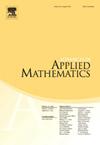系统发育树集合上的共凸特征
IF 1.3
3区 数学
Q3 MATHEMATICS, APPLIED
引用次数: 0
摘要
在系统发育学中,一个关键问题是从特征集合构建进化树,其中,对于一组X个物种,一个特征只是从X到一组状态的函数。在这种情况下,一个关键的概念是凸性,如果具有相同状态的树的叶子所生成的子树的集合是两两不相交的,那么在具有叶子集X的树上,一个字符是凸的。尽管在过去的几十年里,人们对单个树上的凸字符集进行了广泛的研究,但对共凸字符知之甚少,即同时在树的集合上凸的字符。作为更好地理解共凸性的起点,在本文中,我们证明了以下问题的一些极值结果:如果我们限制映射到k个状态的共凸字符,那么在所有大小为t≥2的n叶树集合上的最小共凸字符数是多少?作为共凸性的一个应用,我们引入了一种新的单参数树度量族,其范围介于粗糙的Robinson-Foulds距离和更精细的四重距离之间。我们证明了上述问题中数量的界限转化为新距离的树空间直径的界限。我们的结果开辟了几个新的有趣的方向和问题,这些方向和问题具有潜在的应用,例如,树空间和系统基因组学。本文章由计算机程序翻译,如有差异,请以英文原文为准。
Coconvex characters on collections of phylogenetic trees
In phylogenetics, a key problem is to construct evolutionary trees from collections of characters where, for a set X of species, a character is simply a function from X onto a set of states. In this context, a key concept is convexity, where a character is convex on a tree with leaf set X if the collection of subtrees spanned by the leaves of the tree that have the same state are pairwise disjoint. Although collections of convex characters on a single tree have been extensively studied over the past few decades, very little is known about coconvex characters, that is, characters that are simultaneously convex on a collection of trees. As a starting point to better understand coconvexity, in this paper we prove a number of extremal results for the following question: What is the minimal number of coconvex characters on a collection of n-leaved trees taken over all collections of size , also if we restrict to coconvex characters which map to k states? As an application of coconvexity, we introduce a new one-parameter family of tree metrics, which range between the coarse Robinson-Foulds distance and the much finer quartet distance. We show that bounds on the quantities in the above question translate into bounds for the diameter of the tree space for the new distances. Our results open up several new interesting directions and questions which have potential applications to, for example, tree spaces and phylogenomics.
求助全文
通过发布文献求助,成功后即可免费获取论文全文。
去求助
来源期刊

Advances in Applied Mathematics
数学-应用数学
CiteScore
2.00
自引率
9.10%
发文量
88
审稿时长
85 days
期刊介绍:
Interdisciplinary in its coverage, Advances in Applied Mathematics is dedicated to the publication of original and survey articles on rigorous methods and results in applied mathematics. The journal features articles on discrete mathematics, discrete probability theory, theoretical statistics, mathematical biology and bioinformatics, applied commutative algebra and algebraic geometry, convexity theory, experimental mathematics, theoretical computer science, and other areas.
Emphasizing papers that represent a substantial mathematical advance in their field, the journal is an excellent source of current information for mathematicians, computer scientists, applied mathematicians, physicists, statisticians, and biologists. Over the past ten years, Advances in Applied Mathematics has published research papers written by many of the foremost mathematicians of our time.
 求助内容:
求助内容: 应助结果提醒方式:
应助结果提醒方式:


